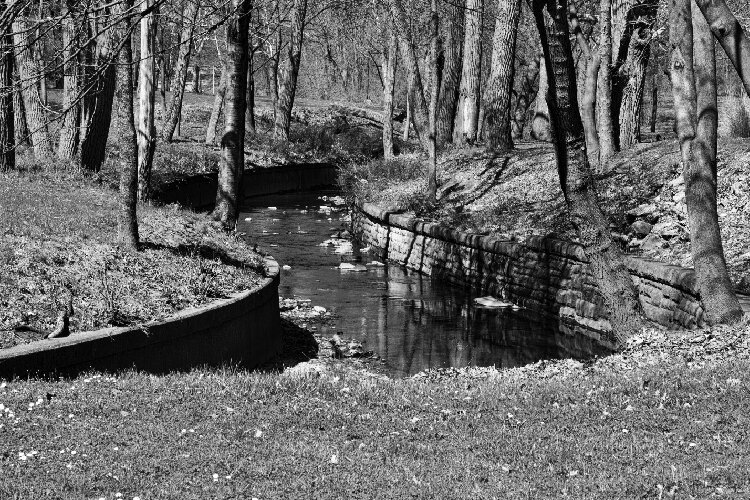Cleveland’s Cultural Gardens: A landscape of diversity, the early years
This is the first in a series of four articles about Cleveland’s Cultural Gardens, based on the book by John Grabowski and Lauren Pacini, “Cleveland’s Cultural Gardens: A Landscape of Diversity,”
The Early Years – 1916-1940
In 1916, even as Europe was engaged in the Great War, the English-speaking world came together to celebrate the 300th year since the death of William Shakespeare. The celebration included the creation of gardens in honor of the Bard, and Cleveland was no exception.
Located on a 276-acre tract of Rockefeller Park, in the Doan Brook Valley, the Shakespeare Garden was dedicated on April 14, 1916 with roses and mulberries, hawthorn, daffodils, violets, fleurs-delis, daisies, pansies, columbine, and other plantings suggestive of Shakespeare’s love for gardening and written about in his poetry.
 The Bust of the Bard, in 1953 this bronze bust by Cleveland sculptor Frank Jirouch replaced the original limestone bust crafted by Joseph Motto and Stephen Rebeck in 1916.The Shakespeare Garden came about at the suggestion of Cleveland native and newspaperman Leo Weidenthal, who himself shared his April 26 birthday with the Bard. Envisioning a chain of gardens, in 1925 Weidenthal, Charles Wolfram, and Jennie Zwick founded the Civic Progress League. The following year the name was changed to the Cultural Gardens League.
The Bust of the Bard, in 1953 this bronze bust by Cleveland sculptor Frank Jirouch replaced the original limestone bust crafted by Joseph Motto and Stephen Rebeck in 1916.The Shakespeare Garden came about at the suggestion of Cleveland native and newspaperman Leo Weidenthal, who himself shared his April 26 birthday with the Bard. Envisioning a chain of gardens, in 1925 Weidenthal, Charles Wolfram, and Jennie Zwick founded the Civic Progress League. The following year the name was changed to the Cultural Gardens League.
In 1926, the Hebrew Cultural Garden was dedicated. In 1929, it was joined by the German Cultural Garden, created only 11 years after World War I—a time when German culture had been largely vilified in the United States.
The Depression years of 1930 through 1940 brought about the creation of 14 new gardens, nine of which (along with the construction of stone walls along Doan Brook) were funded, in large part, by the Federal Government’s Works Progress Administration.
Cleveland historian John Grabowski details the role of the WPA in “Cleveland’s Cultural Gardens: A Landscape of Diversity” as having “covered $650,000 of the costs (an estimated half of all expenditures) between 1926 and 1950.”
 Doan Brook, as it winds through Rockefeller Park, is constrained by stone walls funded by the WPA.All but two of the fourteen gardens were focused on the celebration of the national cultures, with sculptures and other depictions of inventors, scientists, educators, writers, composers, musicians, statesmen, and theologians who had been central to a particular country’s culture.
Doan Brook, as it winds through Rockefeller Park, is constrained by stone walls funded by the WPA.All but two of the fourteen gardens were focused on the celebration of the national cultures, with sculptures and other depictions of inventors, scientists, educators, writers, composers, musicians, statesmen, and theologians who had been central to a particular country’s culture.
The American Legion Gardens—whether considered two individual gardens or one garden with two parts—stood apart from this theme. They were established by the American Legion in 1936 following its national convention in Cleveland that year. While the Peace Garden of the Nations celebrates the contribution of nations to the cause of peace, the Garden of States celebrates each state’s contribution to the nation.
Then, as now, the Cultural Gardens stand on land owned by the City of Cleveland, which was purchased by John D. Rockefeller in 1896 and then donated to the city in celebration of Cleveland’s Centennial. Prominent Boston landscape architect Ernest W. Bowditch designed the landscape of the park along Doan Brook. The Cleveland Cultural Gardens Federation, a 501(c)(3) organization oversees the day-to-day functions of the gardens through a board representing the diverse cultures that came to make up the gardens.
Coming next week: The Middle Years, 1941-1985.
Published by Kent State University Press, “Cleveland’s Cultural Gardens: A Landscape of Diversity,” which combines words and images, will be available at the 76th annual One World Day at the Cleveland Cultural Gardens on Sunday, Aug. 28.












